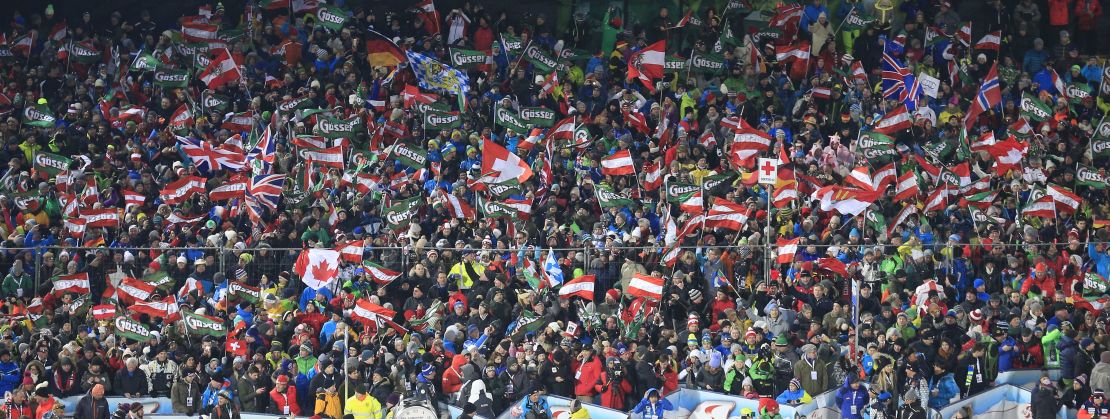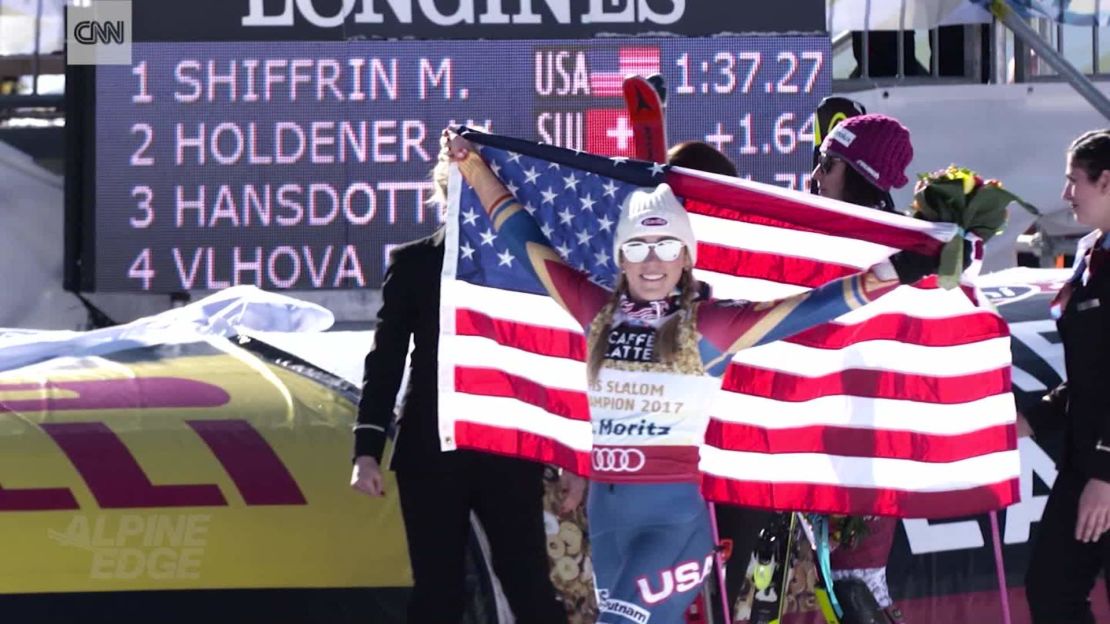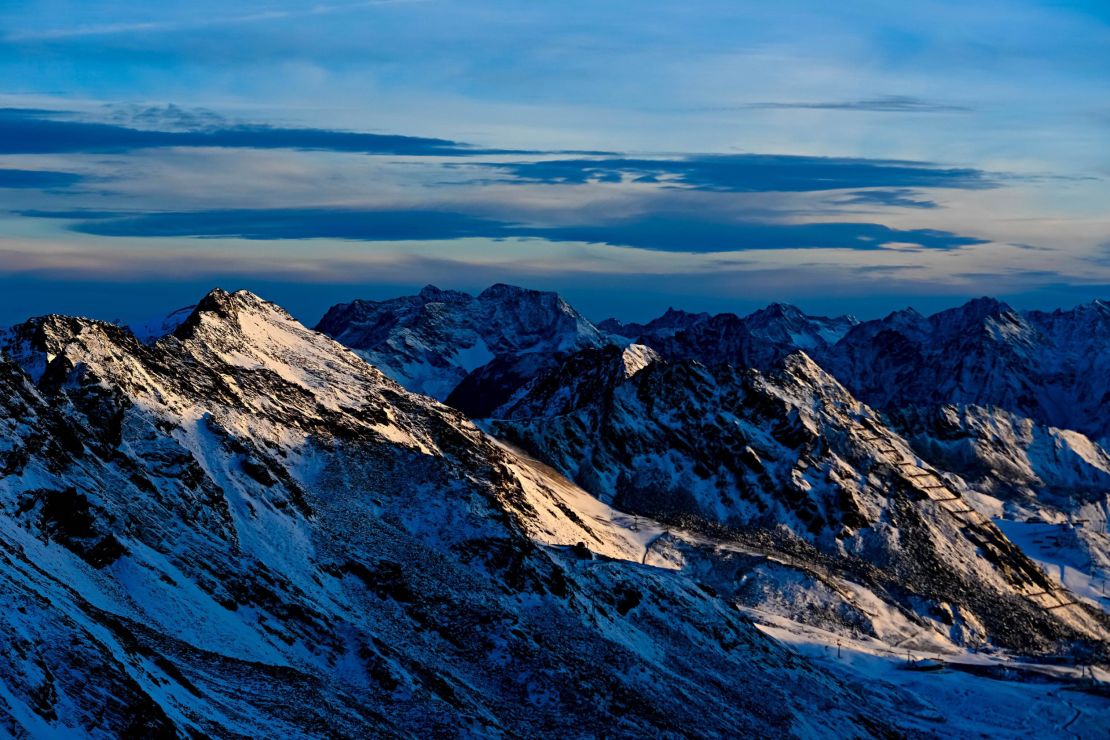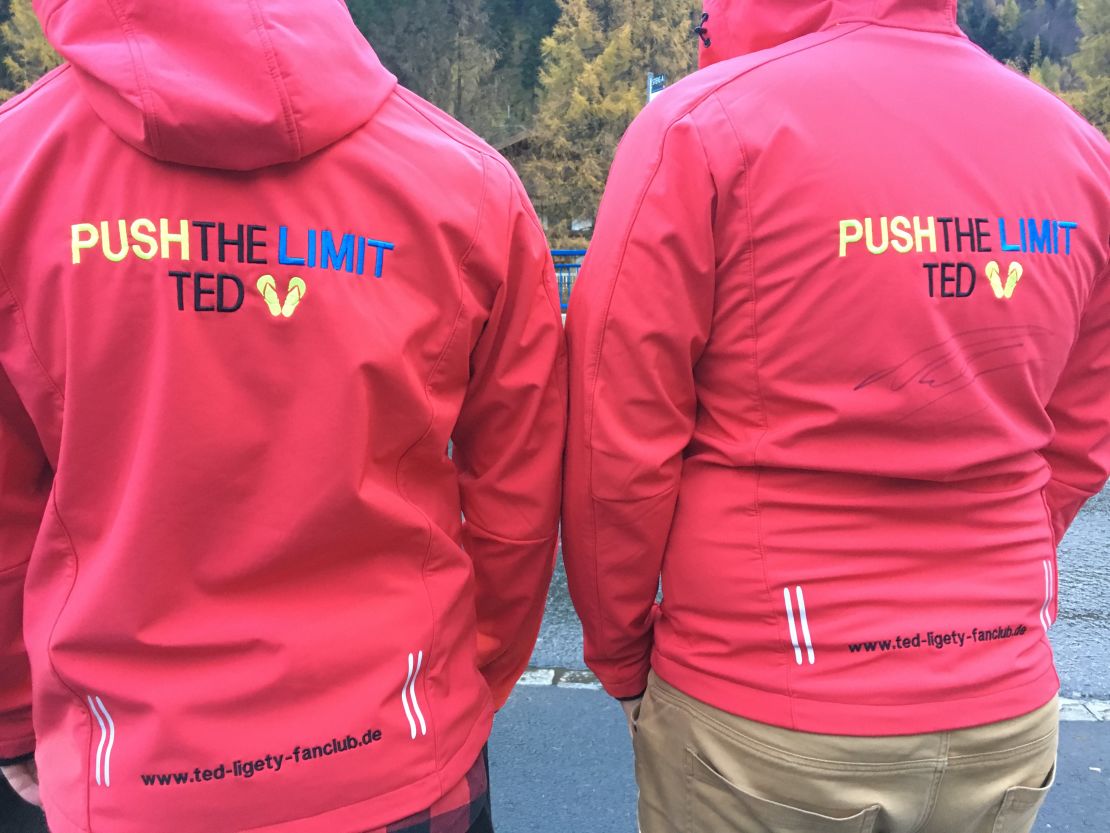Story highlights
Ski World Cup recently held in Soelden, Austria
It was the opening weekend of the season
Fans created a party atmosphere
Sports fans know how to celebrate. No-one does giddy quite as well as the zealous supporter who has witnessed his or her team create history, secure a precious trophy or beat an old rival.
But then there are the fans who take good times to another level. These are the lovers of the snow, the men and women who devote themselves to the ski season, following the world’s best Alpine racers around Europe during the teeth-chatteringly cold winter months.
They drink, they dance, they cheer – on mountains, in remote Alpine towns; in the morning, in the dark, in wind, rain or snow. They are an engrossing sight.

On a morning cold enough to freeze breath, snow is falling on top of the Rettenbach glacier in western Austria. Gloveless hands quickly become numb on days such as these.
A strong wind is holding a row of national flags on full alert. Tiredness is blown away.
Around 14,500 fans have negotiated meandering hairpins on buses, taxis and vans to watch the best female skiers perform on the Soelden slopes for the opening race of the FIS Ski World Cup.
It’s the first of 20 World Cup weekends which will be held across the globe, culminating in Sweden in March.
With the Winter Olympics just three months away, it’s a first opportunity for skiers to test themselves against their rivals, and a chance for fans to see their heroes in action following the lengthy summer break.

Thundering music
Near the entrance, fans are scurrying to and fro. To entertain there is the skiing, and also some slapstick too as some cower and flinch at the sight of ski-carrying fans making dicey sharp turns.
The majority of fans can be found near the finish line, watching racers zig-zagging down the piste, but from wherever the action is observed, thundering music – the sort of noise that would make the crabby tut and groan – can be heard. It is nearly loud enough to crack ice.
A short distance from the course, as the first round of racing comes to a conclusion, six women appear on stage. Dressed in red ski pants and white coats, they merrily dance to hip-swinging pop tunes, encouraging their ever-growing audience to follow their lead, and many do.
Fans are dancing on the snow and on tables, some are waving flags, ringing cowbells or blowing into plastic horns. Some sing along to the music, others link arms with friends. After all, it would be foolish to stay still when it’s so bone-chilling cold.
With breakfast barely digested, beer cans are raised skywards. It is one of the coldest, most beautiful, clubs in the world.
Towards the bottom of the course are four shivering French fans dressed as the Teenage Mutant Ninja Turtles. Their outfits are not offering much protection from the elements.
Fancy dress is not unusual in these parts – behind them are men dressed as cows, the udders crudely placed on their chest. It is one part elite sporting event, one part bachelor party.
READ: Why ‘life is dangerous’ for pro skiers
READ: All eyes on Olympic medals as season starts
Samuel Collomb-Clerc has come dressed as Michelangelo. He is from an area of south-east France he describes as the country’s skiing heartland.
The 21-year-old is one of 80 members of the Le Grand Bornand fan club to have completed the 669 kilometer road trip from France, through Switzerland, to Soelden.
“It’s special because people come from all around the world,” Collomb-Clerc says of the attraction of Ski World Cup events.
“There’s a great atmosphere. Everyone loves skiing, everybody parties together and that’s great.
“It’s different to other sports. Skiing isn’t the most famous sport, but people who watch skiing know it very well and you know when you’re coming to these events you are joining other people who love things like you.”

Waving an American flag is Alex Born from Bavaria in Germany. He has switched allegiances this weekend because he supports Mikaela Shiffrin, the Colorado-born reigning World Cup champion who hoisted last year’s Crystal Globe.
The 39-year-old software engineer has opted for a routine ski jacket and trousers for the occasion. It is, perhaps, difficult for a man who has, for the last four years, attended most of the European-based World Cup events to find a wacky outfit for every race weekend.
“We like the atmosphere of this sport. Compared to football it’s so much fun, it doesn’t matter who the people support,” he tells CNN Sport.
Born admits his is an expensive hobby; he spends thousands.
“Always we’re trying to be in the VIP area so a weekend will cost about €1,000-1,500 ($1,165-1,750),” he says. “Just last week somebody told me I’m crazy!”

READ: Vonn happy to be back a Rebensburg wins opener
But even for those who aren’t ardent ski fans, it is easy to see the appeal of this good-natured atmosphere in a breathtakingly beautiful setting. It is an occasion for all the generations, though the revelry is not solely reserved for the mountains.
Lindsey Vonn: Greatest female skier retires
Disco lights
Friday night in the Otztal Valley and fans have gathered in the dark, congregating in a car park which has been transformed into a pop-up shindig.
People in wooly hats are drinking gluhwein (a traditional Austrian hot, spiced wine), devouring schnitzels and are waiting for the main event of the night: the bib number draw for the next day’s race.
It’s quite the show. A live band is entertaining the masses; there are disco lights, beer on tap and, as ever, the sound of cowbells ringing in the distance.
By 6.30pm hundreds have gathered around the stage. They are craning their necks, waving flags (there is a lot of flag-waving on a race weekend), and watching skiers pick out from a tombola a number that will determine the order in which they will race.
There is the touch of the Eurovision Song contest about this draw: two male hosts play up to the crowd, switching from German to English, depending on the nationality of the athlete in their presence.
Some skiers, normally those who are yet to become household names, are told to hurry. They become the victims of the hosts’ drawn-out chatter.
But the major stars can take their time in the spotlight. When the 22-year-old Shiffrin makes an appearance, Stars and Stripes flags pop up like toast and the crowd’s roars rise by a few decibels.
The American, who loves tap dancing, is encouraged to dance for her fans. At first she is apprehensive but, with a little encouragement, her feet begin to move, then the hips and, within seconds, her arms are in the air.
Shiffrin’s body is now moving in unison and, buoyed, she spins. It is rare to see athletes as relaxed as this on the eve of a major competition.
Thanks to Shiffrin the crowd is now yee-hawingly vocal – there is no doubting what sport reigns supreme in this part of the world.
But the end of the draw does not signal the end of the revelry. These fans will foot-stomp into the night.
‘It’s crazy to think they’re my fan club’

Outside one of Soelden’s many ski stores are four Germans, all wearing matching red jackets with “Push The Limit Ted” stitched on the back. They are members of the Ted Ligety fan club and this is their weekend uniform.
Formed in Saxony in 2012 in appreciation of the two-time Olympic champion, members of this club – whose annual membership fee is $23 (€20) – travel around Europe to watch their favorite Alpine skier.
The fan club’s website says its purpose is “promoting interest in alpine ski racing” and to “support the racer Ted Ligety.”
Ligety admits it is “surreal” to have a fan club in his name.
“Growing up I never would’ve thought I’d be where I am today,” he tells CNN Sport.
“It’s pretty crazy to think they travel to most of the races and they’re my fan club.”

READ: How fatherhood changed everything for Ted Ligety
Ligety talks of the initial shock he experienced when, as a 21-year-old fresh on the circuit, he first heard supporters yell his name near the start line.
“You’re never fully used to it, but now I can be more focused and not necessarily look over when someone’s yelling my name,” he says, laughing.
The shouting and stomping does not go unnoticed by racers, he says. For many, the highlight of the calendar is January’s annual night race in Schladming, where thousands of fans line the slopes on a floodlit winter’s evening.
There is Kitzbuhel too, with its iconic course and 50,000 screaming fans, and the tradition of Canadian and American racers serving post-race beer behind the bar of a local tavern, called the Londoner.
“There’s definitely a party atmosphere around ski races,” says Ligety.
Visit CNN.com/sport for more news and videos
“You see it on the finish area, like Kitzbuhel – it’s a full-on party scene, people drinking hard. They get pretty raucous for sure.
“I really like it when we have those races, when there is that atmosphere. It’s flattering to think people are watching your races and are super psyched to be there.”



































